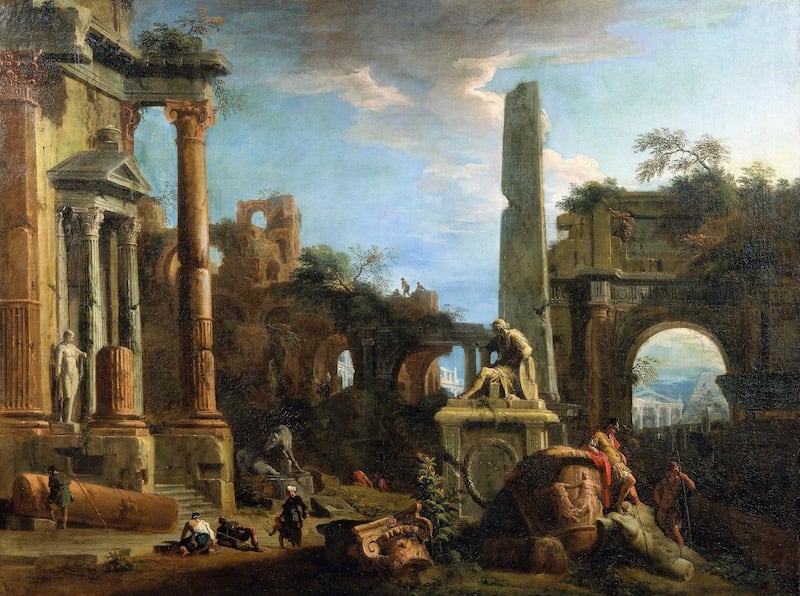If, in the 18th century, you happened to be a privileged, affluent Northern European, it was entirely possible that you would pass two or three years of your early adulthood on the Grand Tour. Basically you would be heading south, towards Italy and, once there, only two destinations really mattered, Rome and Venice. Once you got to Venice, apart altogether from the heady social life, there was the wonder of the city itself, one of humanity’s most extraordinary creations.
Venice is inextricably linked to many great artists – Titian, Tintoretto, Veronese, Bellini and many more – but great Venetian painters are not necessarily the great painters of Venice, and Canaletto is top of the list of the latter. By chance and circumstance, the largest single collection of Canaletto's work ended up in the British Royal Collection, and Canaletto and the Art of Venice at the National Gallery of Ireland draws on its treasures.
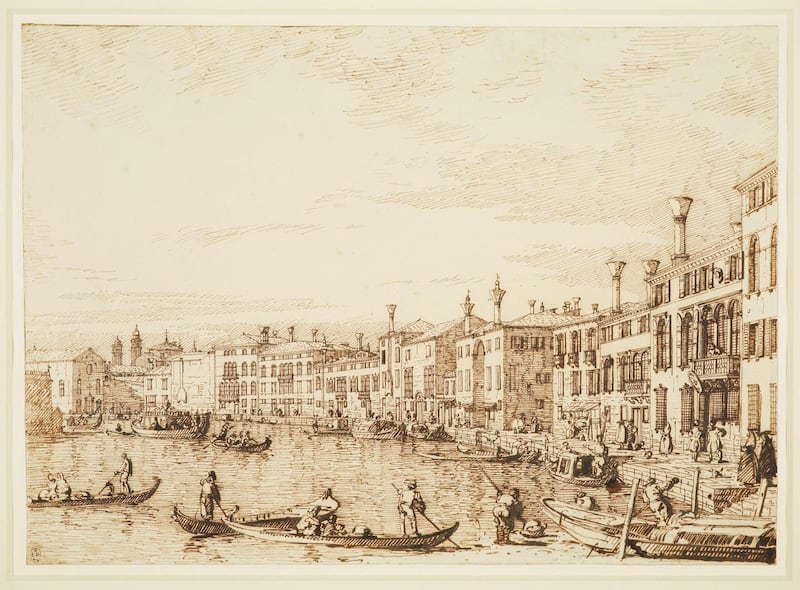

Canaletto was born Giovanni Antonio Canal in 1697. His father Bernardo was a set painter, and Canaletto began his working life as an apprentice in the trade. In 1719 he was working on opera sets in Rome with his father and brother, reputedly for an Alessandro Scarlatti production at the Teatro Capranica. It seems that during this time in Rome he finally resolved to move from set painting to easel painting and, back home in Venice the following year, he registered with the painters’ guild.
Some accounts have him as a pupil of the painter Luca Carlevarijs who was certainly an important influence: Carlevarijs had published a well-known set of etchings of Venetian scenes early in the century. He exemplified and influenced, as did Canaletto subsequently, a move away from historical, allegorical and genre subjects towards accounts of the world at hand, especially the manmade world. This broadly entailed two kinds of picture, verdute and capricci, each category dependent in its different way on the actuality of the surroundings. Verdute were relatively accurate cityscapes and capricci were architectural fantasies, imagined, often dramatic rearrangements of buildings and ruins. The latter reached a dizzying apogee in the fantastical Prisons of Piranesi.
It's easy to underestimate Canaletto. He had the extraordinary beauty of Venice at his disposal, but look closely and it's clear that he was an absolutely superb artist
Grand Tourists drove the demand for verdute and capricci and artists produced and explored both, though Canaletto was certainly more a verdutista. It's not quite a question of topographical fidelity on the one hand and imaginative invention on the other. Despite the exceptional precision of his observational technique Canaletto freely manipulated the elements of a scene to suit the demands of a composition. But the end result is for the most part a plausibly realistic account of what is there – unless he deliberately transposes buildings or other features, which he did on occasion.
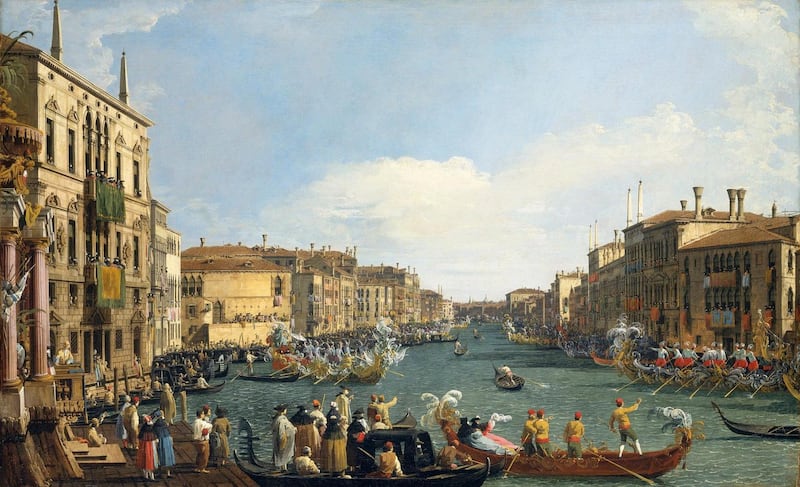
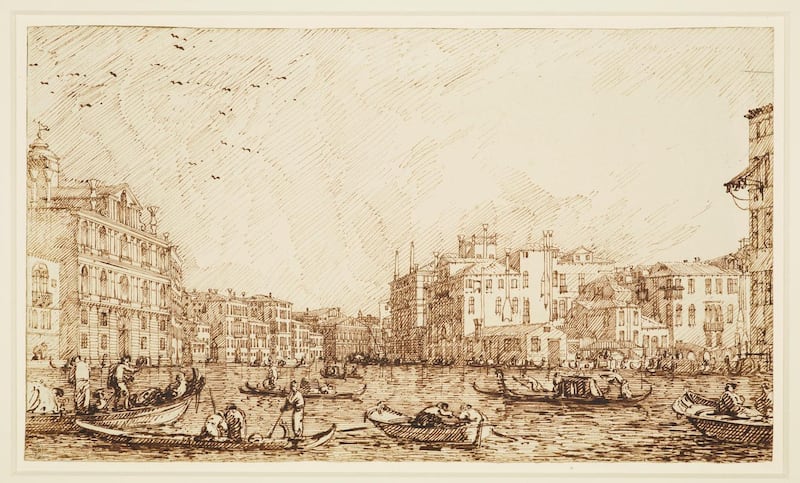
Canaletto did find Italian patrons but his economic viability depended on connecting with the wealthy visitors, which is where two middlemen, Joseph Smith and Owen McSwiney (also known as Owen Swiney) came in. McSwiney, a theatrical impresario and art dealer, born near Ennniscorthy in Ireland, had been bankrupted in London and was trying to re-establish himself in Venice, acting as an agent for potential art patrons. He drew Canaletto into a fairly minor role in a substantial commission, and through him the painter met Smith, who'd been sent by his family to work with a firm of bankers and merchants. Once he arrived in Venice, in his early 20s, he was smitten and stayed there for the rest of his life. He and McSwiney were regarded locally as "inglesi italianizzati". Smith became by far the most significant art dealer in Canaletto's life and his most important collector.
Despite his popularity, it’s easy to underestimate Canaletto. He benefitted from having the extraordinary beauty of Venice at his disposal, but look closely and it’s clear that he was an absolutely superb artist – a gifted draughtsman and printmaker, and a technically expert painter. There is a general perception that his best work is his earliest – strongly represented in this exhibition, incidentally – and that, from about 1740, his style became more mechanical and formulaic. In fact his work developed consistently and never settled into a rigid formula, more dramatically, perhaps, until about 1730, but he always moved on.
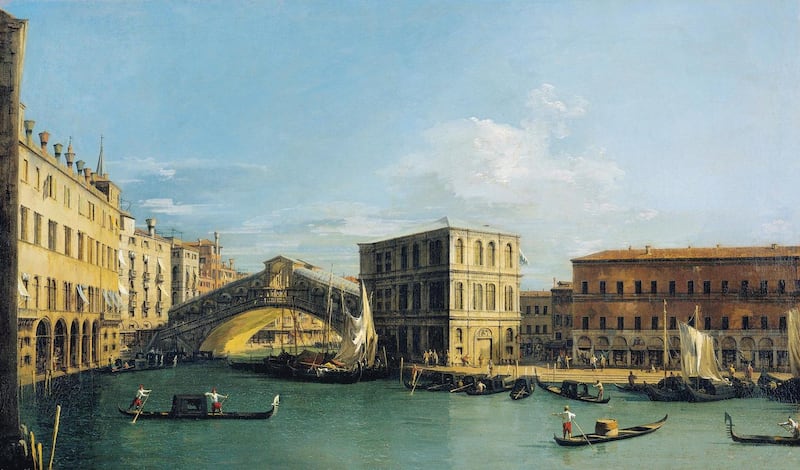
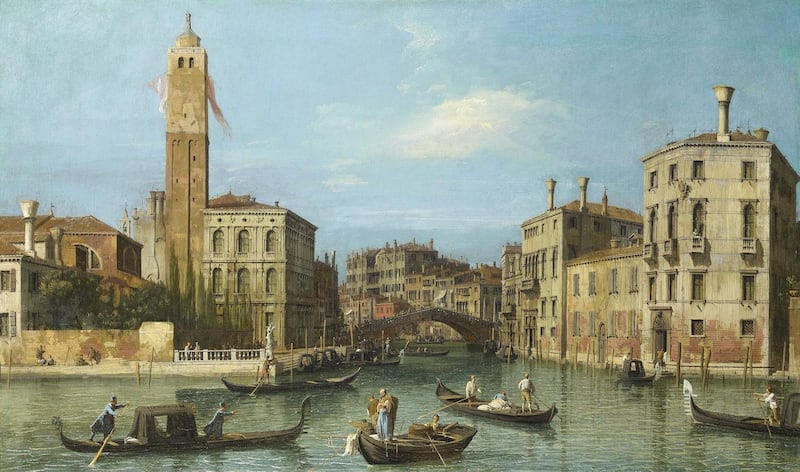
An even, classical serenity sets his mature work apart from that of the other best-known, younger painter of Venice, Francesco Guardi. As regards pigments, he especially liked Prussian blue and Naples yellow, used any reds available, and a large range of earth hues. He worked mostly on commercially prepared canvases, painting onto a red or orange ground. By 1730 he was laying a cool grey, blue or beige imprimatura over the ground. It's likely he did so not just for the luminosity but because it better facilitated his use of a kind of camera obscura. The device surely contributed to the precision of his architectural painting, but it doesn't eclipse the brilliance of his painting technique. His rendering of light, shade and detail is optically sophisticated and bears comparison with the work of Vermeer and, as with Vermeer, he had a knack for persuading you that you've seen a detail that is not actually there. Witness his depiction of people in his panoramic views.
Canaletto’s reputation grew as Smith continued to market his work. Given that so many of his buyers were English there’s a certain logic to Canaletto travelling there in 1746, again involving McSwiney, by then back in London, as an intermediary. Curiously, Canaletto was met with an uneven, sometimes antagonistic reception in England, though he produced a great deal of excellent work during his close to ten-year stay there – with just one spell back in Venice. Solid details on his life and character are surprisingly scant, but he did not seem to integrate particularly well and is thought to have worked in relative isolation. Contemporary comments, to the effect that he painted the Thames as though it was the Venetian lagoon, are unfair.
Venice is linked to many great artists – Titian, Tintoretto, Veronese – but great Venetian painters are not necessarily the great painters of Venice. Canaletto is top of that list
Despite his industry and high level of sales, he never seems to have been conspicuously well off. Back in Venice from 1763, he was elected to the academy and awarded a public post, but there is a sense that his work had fallen out of fashion. When he died in 1768 his estate consisted of 28 paintings and few other possessions.
In the meantime, a decade earlier Smith’s fortunes had waned dramatically. The Seven Years War in Europe led to a succession of bank collapses that left him facing ruin. Under pressure, he opened negotiations on the sale of his art collection and library with agents for King George III. He ran a publishing house in Venice and was as keen a book collector as an art collector. As well as his incomparable holdings of Canalettos and much else, he had a Rembrandt and a Vermeer. Eventually his library and his collection went for £10,000 each. The experience did not put him off collecting: once he’d recovered financially he commenced buying on an ambitious scale again.
Canaletto and the Art of Venice is at the National Gallery of Ireland, Merrion Square West/Clare Street, Dublin, from December 5th to March 24th, 2019. Entrance from €10: book at nationalgallery.ie
